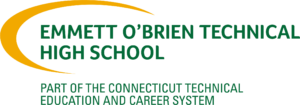Instructors
Johnson, Lillie
Department Head, Hairdressing and Cosmetology
Lillie.Johnson@cttech.org
203-732-1852
Salmeri, Diane
Instructor, Hairdressing and Cosmetology
Diane.Salmeri@cttech.org
203-732-1819
Program Description
Cosmetology encompasses a broad range of specialty areas including hairstyling, nail technology, and esthetics. It is the art and science of beautifying and improving the skin, nails, and hair, and the study of cosmetics and their applications. This field is recognized as one of the oldest professions in the world. Today, new techniques and specialties are growing more than ever. Estheticians rejuvenate skin and keep some disorders at bay. The industry is in an age of specialization. Day and men-only specialty spas are on the rise, providing many new career opportunities.

